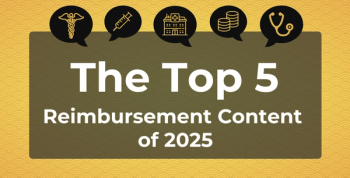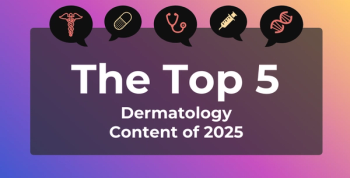
Bevacizumab First-line Treatment More Cost-effective in RVO vs Aflibercept
Aflibercept was a less cost-effective treatment for retinal vein occlusion (RVO) compared with bevacizumab, although visual acuity outcomes were similar.
Visual acuity outcomes were similar between aflibercept and bevacizumab, with bevacizumab being more cost-effective, making it the preferred first-line treatment for
RVO is the second most common retinal vascular disease after diabetic retinopathy, with the presence of RVO most commonly due to macular edema. Anti–vascular endothelial growth factor (anti-VEGF) treatment has been used as a therapeutic target for macular edema, with aflibercept and bevacizumab 2 commonly used anti-VEGF treatments. Quality-adjusted life-years (QALYs) for these treatments are evaluated by comparing the cost of providing the intervention with the benefit created. This study used data from the SCORE2 study to evaluate the nuances of the cost/benefit relationship in treatment of central RVO and hemiretinal vein occlusion (HRVO).
An economic model that compared the 2 treatment approaches was constructed with 2 avenues of treatment: iniating treatment with bevacizumab and switching to aflibercept if a patient experienced poor or marginal treatment response after 6 monthly injections and initiating treatment with aflibercept and switching to dexamethasone if the patient experiences poor or marginal response after 6 months. The costs of bevacizumab and aflibercept were taken from literature and effectiveness was measured with QALYs.
SCORE2 was a multicenter randomized study that enrolled participants with a best-corrected electronic Early Treatment Diabetic Retinopathy Study visual acuity letter score (VALS) between 19 and 73 letters, who had macular edema with central retinal involvement from CRVO or HRVO, and who had a central subfield thickness of 300 mcm or 320 mcm or greater; the eligibility criteria allowed inclusion of study participants with HRVO to a maximum of 25% of the study sample.
All eyes were randomized 1:1 to intravitreal bevacizumab 1.25 mg every 4 weeks for 6 months or intravitreal aflibercept 2.0 mg every 4 weeks for 6 months. All costs included in the model were associated with medication and administration, as long-term costs were irrelevant to decisions made because visual acuity outcomes were similar. The researchers made the assumption that only 1 dexamethasone implant was required given dexamethasone’s association with the aflibercept arm and its cost.
The model estimates for pretreatment and posttreatment visual acuity and retinal thickness were compared with estimates from the SCORE2 participants not included in the training sample after the economic model was estimated. Quality of life was measured by utility and measured on a scale from 0 to 1.
The study found that simulated patients treated with bevacizumab had a 22-letter improvement in VALS in their treated eye after 1 year whereas those using aflibercept had an improvement of 18, with the comparable VALS improvement in the fellow eye at 3 for bevacizumab and 1 for aflibercept. Changes in the treated eye were not materially different from the average VALS improvement of 18.6 and 18.9 that were found in the SCORE2 trial. However, the simulated decrease in retinal thickness after 1 year was less than was observed in the SCORE2 trial at 6 months. Comparisons were nonsignificant in the split-sample comparison in the SCORE2 validation sample comparison against the simulation.
A cost of $3213 for 1 year of treatment was found in participants who started therapy with bevacizumab while improving their QALYs from 0.845 to 0.871. Patients who started aflibercept had a yearly cost of $21,340 and improved their QALYs from 0.845 to 0.865. The researchers concluded that bevacizumab was dominant compared with aflibercept in this modeling exercise due to effectiveness and reduced cost. However, the effectiveness of the treatment was likely due to random variation given the small difference in QALYs. Sensitivity analyses found no clinically relevant changes in parameter values.
The SCORE2 trail does not represent real-world conditions for treatment, and the study was limited to 1 year after the initiation of treatment, which meant that steroid-induced cataracts or decline in visual function were not considered, indicating limitations on wider generalizability of these study findings.
The researchers concluded that first-line treatment with bevacizumab—with an option to switch to aflibercept if patients do not respond in the first 6—was able to dominate first-line treatment compared with first-line treatment with aflibercept. The large cost differential between the 2 treatments and the small VALS difference reinforces this finding.
Reference
Kymes SM, Oden NL, VanVeldhuisen PC, et al. Cost-utility comparison of bevacizumab and aflibercept in the treatment of central or hemiretinal vein occlusion in the SCORE2 trial. JAMA Ophthalmol. Published online May 11, 2023. doi:10.1001/jamaophthalmol.2023.1463
Newsletter
Stay ahead of policy, cost, and value—subscribe to AJMC for expert insights at the intersection of clinical care and health economics.








